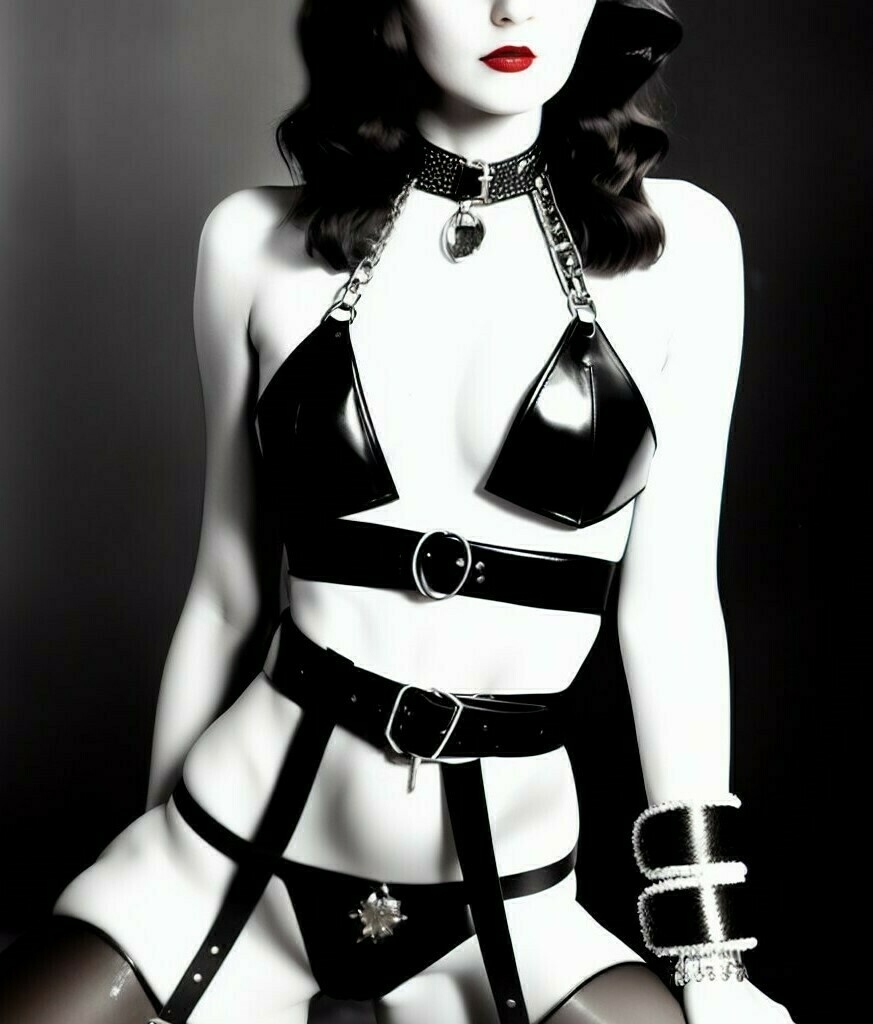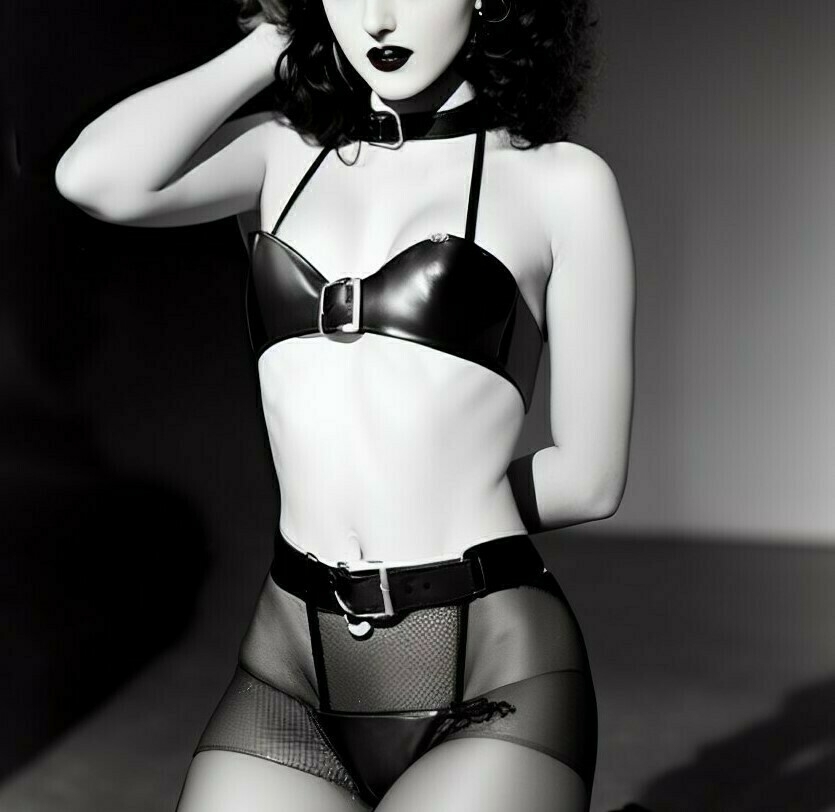
The ever-so-trendy pastie and its fanciful relative, the nipple tassel, are the fashionable body accessories of the moment. From Miley Cyrus to Rhianna and beyond, everyone's wearing them, sparking a surge in popularity since Dita Von Teese brought them back into the spotlight in the ‘90s. Nowadays, with social media platforms allowing more personal expression than ever before, nipple pasties have gained popularity in artistic photography and https://nakedpornpics.com/ free nude teen selfies. They provide an artistic element while maintaining modesty if desired. But the pastie predates even that – it has a fascinating past intertwined with art, censorship, moral outrage and massive societal changes...dive into the hidden world of the pastie and its deep-rooted history.
Many who have a passion for cabaret history are aware that burlesque was not always about the skill of striptease. Its origins actually stem from the British music hall customs of satire, comedy and music. To add to the excitement of the show, the attractive women who performed wore garments which were thought to be scandalous during the Victorian era, and they would share bawdy jokes and sexually suggestive material. This proved to be an exhilarating form of entertainment for a normally restrained society.
For some time, the concept of striptease was not yet adopted, with different dancers all claiming to have been the first to invent it. Tales of how it began vary, with one story involving a dancer whose straps snapped while she was on stage, and another describing a performer who absentmindedly started to undress in view of the audience after she had finished her performance!

Nowadays, with the spread of a lot of hot ebony porn, It's difficult to pinpoint precisely when the pastie became part of burlesque costuming, however we can go back to as early as the late 19th century to find images of dancers wearing garments similar to the modern-day pastie. During this time, 'Orientalism' was a popularly studied concept - a largely imagined (and now recognized as being a very colonialist and racist) view of the history, practices and secrets of the East, which included Middle Eastern, Asian, and Egyptian culture.
Certainly, the curiosity of the public was aroused by the captivating stories of exotic women in harems, concubines, and courtesans. These tales sparked thoughts of an uninhibited lifestyle in the distant places of the world, stirring a sense of excitement in a culture where sexual propriety and ethical standards were the norm.
Many entrepreneurs quickly saw the potential of sex as a money-making opportunity and created exhibitions at World Fairs that showcased performances by exotic-looking women doing 'muscle dancing', a type of belly dancing which would have been deemed too provocative for public viewing if it wasn't presented as an educational display.
It was becoming increasingly evident that dancers, usually local Vaudeville stars, were being showcased as Eastern Princesses. They would perform spectacular shows like Salome's Dance of the Seven Veils, Arabian Nights, and the Temple Dance of the Priestess at places like the Algerian Village and the Persian Palace.

The illustrious Mata Hari is undeniably the most renowned dancer of this genre, yet other dancers, such as Little Egypt and Loie Fuller, also made their mark. These dancers tended to don daring costumes and shed pieces of clothing as they moved, though they usually remained covered up with bodysuits, bejewelled bikinis, and metal discs adorning their chests.
While the dance of the belly was being performed in dignified locations around Europe and the US, the circus sideshow adapted it for their own purposes and began to include the "dance of the belly" in their ten-in-one shows. The performers wore costumes that left little to the imagination and audiences could not get enough. Eventually, the educational purpose of the dance was diminished and it was replaced with a much more risqué version, now known as the "hoochie cootch", which often featured a nude finale if it could be done without consequence.
Nevertheless, as the art of stripteasing spread from the sideshows to Vaudeville shows spread around the US, people became increasingly uneasy and new laws were put in place to prevent nudity in theaters that wanted to display 'burlesque revues'; evenings filled with music, laughter, and gorgeous women wearing little clothing.
The renowned Ziegfeld Follies and Minsky Brothers' National Winter Garden were no longer the typical, male-dominated, rough and ready tents of travelling fairs, but instead became theatrical attractions that drew in people of all genders and backgrounds. This transition from the lowbrow to the highbrow gained the attention of law enforcement and government officials, who sought to start a moral crusade against this arising sector.
Burlesque clubs were constantly on the radar of the authorities, who were often quick to arrest performers for appearing too scantily clad. This is where the pastie came to the rescue, allowing dancers to perform almost nude while still keeping their modesty intact. Since different states had different regulations, dancers had to be especially creative to get around them. The most prevalent trick was to attach a string to the pasties in a halter neck style, so they would be viewed as bikinis. This technique is now famously known as "wearing them Boston Style" due to the staunch laws in that state!

Carrie Finnell has become a legendary figure in burlesque for inventing the now-iconic nipple tassel. Her renowned 'mammary manipulation' act saw her tantalise audiences with her ‘educated bosom’, shaking her tassels in a mesmerising fashion - a move which has become a signature of the burlesque dancer.
Striptease enjoyed a period of immense fame and wealth, with its stars being the talk of the town and splashed on the pages of gossipy tabloids. Reports of their romantic activities, opulent lifestyles, and clashes with the law were commonplace.
The pastie persisted, though in a slightly different shape. It was sold as a swimsuit cover-up or a sun-tanning accessory, and sometimes made brief appearances on the runway, peeking through sheer clothing.
Although the pastie has been considered a taboo and scandalous accessory related to the female body, its allure has never completely faded. From the seventies to the present, its presence can be seen in various forms of hot XXX movies, fetish photography and fashion; from the brilliantly bedazzled and bejeweled sets that trace back to its origin to the classic punk look consisting of strips of black tape crossed over the nipples.
Nowadays, burlesque performers don costumes with pasties and tassels not only to stay within the laws of the venues they perform in, which require a special permit for events involving nudity, but also to honor the long-standing history and tradition of burlesque.
Lingerie fashion is letting ladies who adore the look of pasties dress up in all kinds of unique styles, shades and designs! Whether they're rocking them in a club, peeking out from underneath a sheer garment, or just for a bit of naughty fun in the bedroom, we're all about pasties - especially when they're paired with open cup and quarter cup bras!
Check out other posts from this blog!
- Top of hottest black pornstars in 2023
- Your Guide To All Types Of Sex Toys
- Unexpected benefits of watching porn
- Striptease Guide: How to Give a Striptease in 8 Steps
- Top 10: Best and Hottest MILF, Mature Pornstars (2023)
- Unveiling the Extravagance: Strippers Share Stories of Their Wealthiest Clients
- 9 Strip Club & Lap Dance Etiquette Rules Explained by Strippers
- The Art of Striptease
- Stripping and Social Media
- How to Get Nudes
- Is OnlyFans Legal in 2025
- Top 10: Hottest Latina Pornstars
- Top 10 OnlyFans Earners
- How Often Should You Masturbate? A Comprehensive Guide